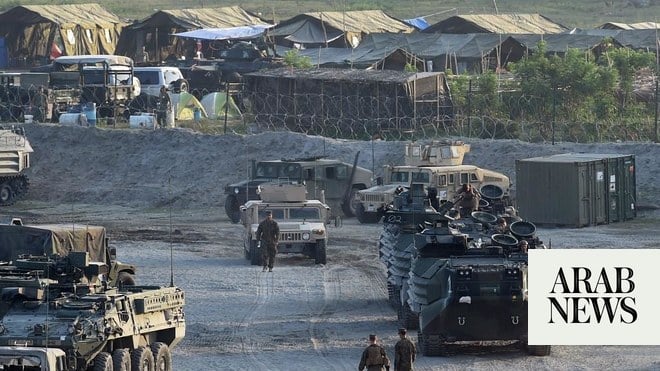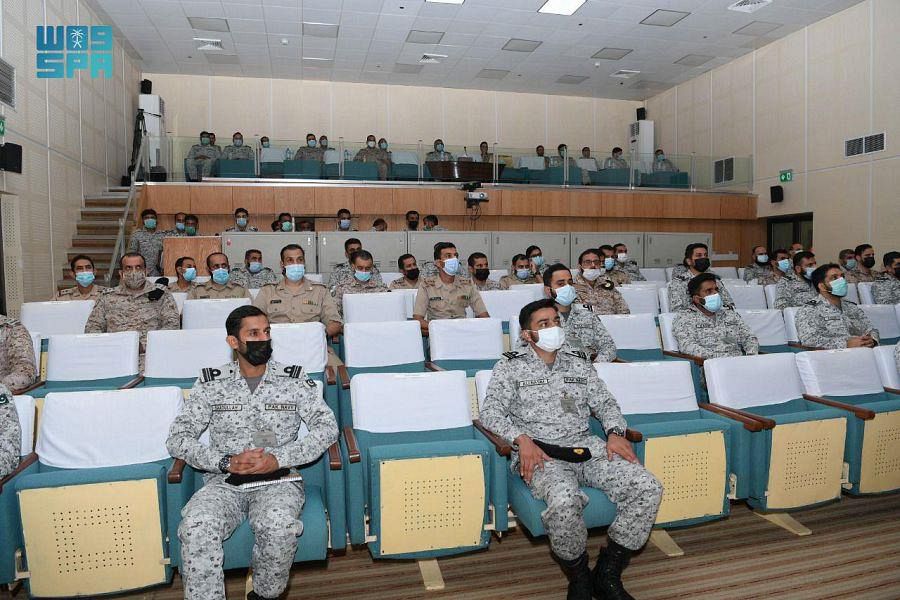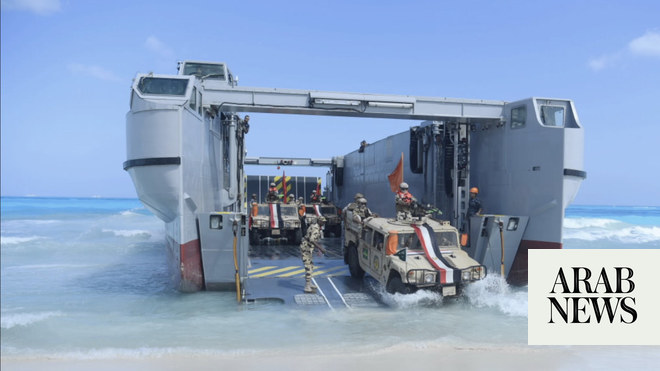
Annual exercise, Balikatan, covered live-fire training, urban and aviation operations, and disaster relief
For the first time, Patriot missile systems were deployed in amphibious maneuvers in the Asian nation
MANILA: Filipino and US forces on Friday concluded their largest joint military drill in the Philippines in recent years.
The two-week training exercise, involving nearly 9,000 soldiers from the northern coast of Luzon to Palawan islands, came amid rising tensions in the disputed South China Sea, a strategic waterway claimed by China almost entirely, while it is also contested by the Philippines, Brunei, Malaysia, Taiwan and Vietnam.
ad
The annual drill, Balikatan — which means “shoulder-to-shoulder” in Tagalog — covered maritime security, amphibious maneuvers, live-fire training, urban and aviation operations, counterterrorism, and humanitarian assistance and disaster relief.
“This exercise effectively capacitates our armed forces as we fulfill our respective responsibilities in maintaining peace and stability in the Indo-Pacific Region,” Armed Forces of the Philippines chief Gen. Andres Centino said during the drill’s closing ceremony.
He added that the exercise was one of the Southeast Asian nation’s proactive measures in dealing with unprecedented and real-world challenges.
The US and Philippine forces deployed more than 50 aircraft, four ships, 10 amphibious craft, four HIMARS rocket launchers, and four Patriot missile systems during this year’s Balikatan. The Patriot missile systems were used in amphibious operations in the Philippines for the first time.
“After two years of a global pandemic, US and Philippine forces have come together to complete one of the largest Balikatan exercises ever held,” said Heather Variava, US Embassy in the Philippines chargé d’affaires ad interim, who attended the ceremony as a guest of honor.
ad
“This is a testament to the strength of the US-Philippine alliance and the shared priorities of our countries.”
The Balikatan drills were initiated in 1991, anchored on the 1951 Mutual Defense Treaty, which commits Washington and Manila to assist one another in case of an attack.
“The completion of yet another successful Balikatan is a clear example of our shared commitment to advancing peace and stability in the Indo-Pacific region,” US Marine Corps Forces Pacific Deputy Commander Brig. Gen. Joseph Clearfield said.
“We are better prepared to respond as one cohesive team to any crisis or challenge.”
While the US-Philippine war games were likely noticed by Beijing, as they were being carried out relatively close to Taiwan, which China claims as its territory, both Centino and Clearfield said they were only aimed at improving interoperability.
“We have done this in the past, 36 times already,” Centino told reporters.
“It is meant to just improve our capabilities to use our unit procured equipment.”
ad
While China has been seemingly siding with Russia since the beginning of Moscow’s invasion of Ukraine in February, which has been seen as inflaming already existing Washington-Beijing tensions, Clearfield said the drill “had nothing to do with current events.”
Clearfield added: “We were working on doctrines, capabilities and capacities that are joint force needs currently, and in going forward in a way to deter aggressions but this was long planned a year ago before any sort of conflagration happened in Ukraine with Russia.”
Jay Batongbacal, director of the University of the Philippines’ Institute for Maritime Affairs and Law of the Sea, told Arab News that any tensions likely to arise would not be due to the drill itself.
“As a sovereign nation with the right of self-defense, we are fully entitled to carry out whatever military exercises are necessary to ensure that we have that ability to defend ourselves,” he said.
“The types of exercises that we’ve seen in this Balikatan exercise have been long overdue, because these are the kinds of exercises that are really needed to enhance our self-defense capabilities.”












